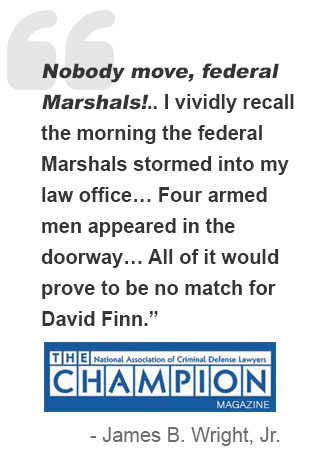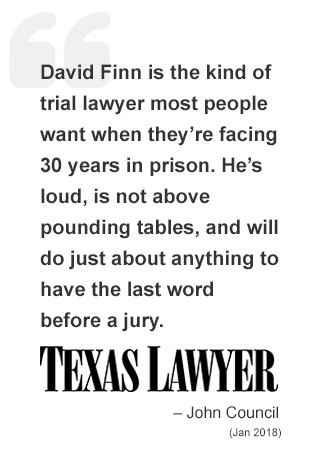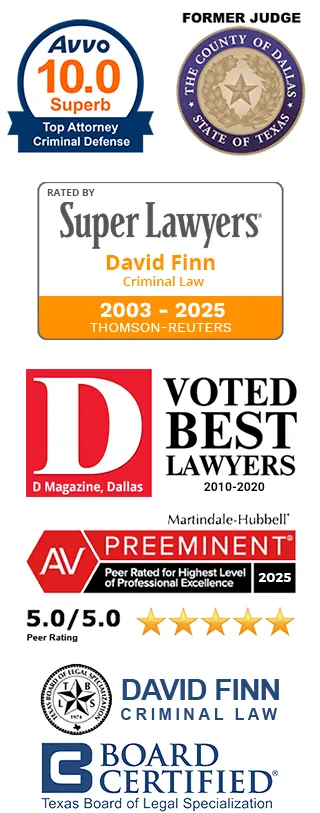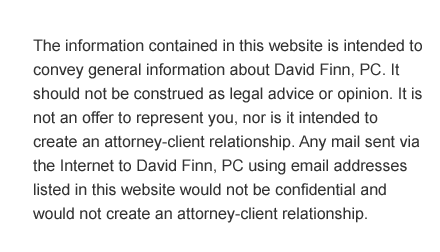


Post-Booker Sentencing Information-No Plea Agreement
BEN W. PESTA
Calif. State Bar. #55062
1901 Avenue of the Stars, Suite 390
Los Angeles, CA 90067
Tel.: (310) 201-0666
FAX: (310) 282-7111
Attorney for Defendant
UNITED STATES DISTRICT COURT,
CENTRAL DISTRICT OF CALIFORNIA
UNITED STATES OF AMERICA,
Plaintiff,
vs.
,
Defendant Case No.: CR
DEFENDANTâS RESPONSE AND OBJECTIONS TO PRESENTENCE INVESTIGATION REPORT AND SENTENCING MEMORANDUM
TO THE CLERK OF THE U.S. DISTRICT COURT FOR THE DISTRICT OF CALIFORNIA, AND TO THE UNITED STATES ATTORNEY AND HER ASSISTANTS:
DEFENDANT, by and through his attorney of record, BEN W. PESTA, hereby responds to the U.S. Probation Officeâs Guideline Presentence Report and Recommendation. His response is keyed to the numbered paragraphs of the Report.
USPOâs Recommendation, p. 2, 6: Defendantâs counsel believes that the USPO intended to write: âeach of Counts 1 through 4, all to be served concurrently,â? instead of âconsecutively.â?
2-3, 4: The Report correctly describes the provisions of the plea agreement. Both sides are aware of the potential ex post facto issue, and both agree that the stipulated agreement is more equitable than the usual one-Guidelines-edition-for-all-offenses practice. In light of the weird result in United States v. Booker and United States v. Fanfan, 543 U.S. ___, ___ L. Ed. 2d ___, 125 S. Ct. 738 (2005)(hereinafter, âBookerâ?), the Sentencing Guidelines are now advisory: âSo modified, the ⦠Sentencing Reform Act of 1984 ⦠makes the Guidelines effectively advisory. It requires a sentencing court to consider Guidelines ranges, see 18 U.S.C.A. §3553(a)(4)(Supp. 2004), but it permits the court to tailor the sentence in light of other statutory concerns as well, see §3553(a)(Supp. 2004).â? Booker, 125 S. Ct. at 757.
3, 6: Both parties did in fact so stipulate. See Plea Agreement, 9, 20. The Court will, however, note that, post- Booker, that there is considerable support that the âother standard of proof determined by the Court to be appropriateâ? should be the reasonable doubt standard.
1. The Booker opinion (the first, or merits, opinion, hereinafter: âBooker, Stevens, J.â?) relied heavily on the reasonable doubt standard in the quotations it used in its citation of precedent:
a. Apprendi v. New Jersey, 530 U.S. 466, 490 (2000): âOther than the fact of a prior conviction, any fact that increases the penalty for a crime beyond the prescribed statutory maximum must be submitted to a jury, and proved beyond a reasonable doubt.â? Booker, Stevens, J., slip op., 6.
b. Ring v. Arizona, 536 U.S. 584, 602 (2002): âIf a State makes an increase in a defendantâs authorized punishment contingent on the finding of a fact, that fact â no matter how the State labels it â must be found by a jury beyond a reasonable doubt.â? And: â[T]he characterization of a fact of circumstance as an âelementâ or a âsentencing factorâ is not determinative of the question âwho decides, judge or jury.ââ? 536 U.S. at 609, n. 7. Booker, Stevens, J., slip op., 6-7.
c. Blakely v. Washington, 542 U.S. ___, 124 S.Ct. 2531; 159 L.Ed.2d 403 (2004): Washington sentencing law mandated a âstandardâ? sentence of 49-53 months, unless the judge found aggravating facts justifying an exceptional sentence. The application of the Washington sentencing scheme violated defendantâs Sixth Amendment right to have the jury find the existence of âany particular factâ? that the law makes essential to his punishment. 542 U.S., at ___, slip op., at 5, cited in Booker, Stevens, J., slip op., 7.
The Court observed of Booker and Fanfan that: âAs far as the defendants are concerned, they face significantly higher sentences â in Bookerâs case almost 10 years higher â because a judge found true by a preponderance of the evidence a fact that was never submitted to the jury.â? Booker, Stevens, J., slip op., 13, emphasis added.
The Court specifically distinguished United States v. Watts, 519 U.S. 148 (1997), which appears to countenance the preponderance standard at sentencing: âWatts, in particular, presented a very narrow question regarding the interaction of the Guidelines with the Double Jeopardy Clause, and did not even have the benefit of full briefing or oral argument. It is unsurprising that we failed to consider fully the issues presented to us in these cases.â? [Citation omitted.] Booker, Stevens, J., slip op., 16, fn. 4.
Finally, the Court specifically held in Booker: âAccordingly, we reaffirm our holding in Apprendi: Any fact (other than a prior conviction) which is necessary to support a sentence exceeding the maximum authorized by the facts established by a plea of guilty or a jury verdict must be admitted by the defendant or proved to a jury beyond a reasonable doubt.â? Booker, Stevens, J., slip op., 20.
2. In re Winship, 397 U.S. 358 (1970) established the reasonable doubt standard as a Fifth Amendment derivative, and it addressed proof standards in a juvenile proceeding in which (as in sentencing post-Booker) the Sixth Amendment jury trial right doesnât apply. Winship required the reasonable doubt standard because it provides âconcrete substance for the presumption of innocence â that bedrock axiomatic and elementary principle whose enforcement lies at the foundation of the administration of our criminal law.â? 397 U.S. at 363.
3. Neither Congress nor the U.S. Sentencing Commission has expressly provided that preponderance (or any other standard) serve as the proof standard during federal sentencing. In the Commentary to §6A1.3, the Guidelines state that: âThe Commission believes that use of a preponderance of the evidence standard is appropriate to meet due process requirements and policy concerns in resolving disputes regarding application of the guidelines to the facts of a case.â? This belief is not a mandate, and has received no examination since the Apprendi line of cases began. The same commentary also says that in each case, the âsentencing court must determine the appropriate procedure in light of the nature of the dispute, its relevance to the sentencing determination, and applicable case law.â?
The last advantage for the reasonable doubt standard in sentencing is that from the appellate standpoint, itâs bulletproof.
Parenthetically, the Court will note that 6âs (that is, 21 of the plea agreementâs) Blakely language is contingent on a specific event, i.e., âBlakely renders application of the Guidelines unconstitutional, either in whole or in part.â? This is not what happened in Booker. The âremediesâ? opinion (hereinafter: âBooker, Breyer, J.â?) invalidated not the Guidelines, but their mandatory application via 18 U.S.C. §§3553(b)(1) and 3742(e). The Guidelines themselves, in whole and in part, are still constitutional. Two parts of the Sentencing Reform Act are not.
10, 69-70: The ________ children, 14 year-old Brother and eight year-old Sister, suffer from marked learning disabilities of unknown etiology. They are enrolled in the Special Education program at Redondo Union School District, and have been so enrolled for nearly all their school careers. Curiously, the District seems never to have administered psychometrics to identify the specific nature of the childrenâs disabilities.
Consultation reports on Brother and Sister, written by pediatric neurologist Ronald S. Gabriel, M.D., are appended as Exhibits, 0070-0076. Dr. Gabriel found that Brother has âan intact neurological system at this time, although he clearly demonstrates evidence for a learning disability that requires further clarification as to whether it is specific or generalized [i.e., âretardationâ?] and what interventions are required from a cognitive perspective.â? Exhibits, 0071. He noted a perinatal incident, but was unable to diagnose what (if any) effect it may have had. Exhibits, 0070.
Sister, unlike her brother, exhibited a degree of motor system dysfunction. Perhaps because of her low motor skills, Dr. Gabriel wrote: âThis youngster displays findings compatible with an organic process for reasons that are unclear.â? Exhibits, 0075.
Eeg readings for both children were normal. Exhibits, 0073, 0076.
The salient point of interest about both children is, of course, that both have learning disabilities. This would seem to indicate either an hereditary basis for the disabilities, or some other common origin (e.g., both could have been exposed to the same harmful environmental influence in utero, as were many of the children born in the area immediately around New Yorkâs infamous Love Canal).
Whatever the cause, Brother, a ninth-grader, was doing arithmetic at the third-grade level two years ago, and his reading âclearly is below grade level.â? Exhibits, 0070. His school districtâs 2003 Individualized Education Plan (appended, the most recent available) described him as âa student with a severe language delay as well as a specific learning disability. Both receptive and expressive language skills are delayed (syntax/semantics).â? Exhibits, 0001. He received speech therapy for a number of years, but does not do so now.
Sister, Brotherâs younger sister, is not so many years behind in school; she is in third grade, so this would be impossible. Her consultation also reports her âreading and doing math below grade level.â? Exhibits, 0074. Additionally, it describes her difficulties with motor functions and language skills and handling tension. Sisterâs November, 2004 Individualized Education Plan describes her as exhibiting âsignificant speech and language weaknesses. Delays are evident in articulation, especially in connected speech, as well as receptive and expressive language skills.â? Exhibits, 0016. It notes that the third-grader is âable to open and close containers such as ziplock bags and playdough lids.â? Exhibits, 0025.
In her letter of December 2, 2004 (appended to the Guideline Presentence Report), Mrs. Clarke describes the children as requiring substantially more help and supervision than ordinary children their ages. âThey have to have their parents around to act as interpreters or translators between themselves and the world,â? she writes. âI canât always do this, and Kevin does a lot of it, more than would be the case (I think) with most working fathers â¦. Most children are close to their fathers, but these two children are closer than most. The difference is most apparent between Brother and other boys his age, who are beginning to put some distance between themselves and their fathers. Not Brother.â?
The USPOâs recommendations are found on page 3 of her sentencing recommendation. Clearly, the Clarke children would be devastated to see their father incarcerated, and clearly, the negative effect on them would be greater than those on most children of the same ages.
The Court will note that, in keeping with 18 of the Plea Agreement, defendant does not suggest a departure from either the Offense Level or Criminal History Category. Rather, he raises the issue of the disproportionate effect on the children pursuant to 18 U.S.C. §3553(a)(1), directing sentencing courts to consider the nature and circumstances of the offense and the history and characteristics of the defendant; and pursuant to Booker, Breyer, J., slip op., 16-17, directing sentencing courts to consider the Guidelines and §3553(a). The Plea Agreement, at 20, also provides: âBoth defendant and the USAO are free to: (a) supplement the facts by supplying relevant information to the United States Probation Office and the Court â¦.â?
13, Part D. Sentencing Options
When the USPO wrote the Guidelines Presentence Report and Recommendation, she recommended an 18-month sentence. Recommendation, 3. She did so when the USSC Sentencing Guidelines were the only sentencing option. Today, post-Booker, the Court is directed to consider the Guidelines as one of a number of sentencing factors. Specifically, Booker, Breyer, J. directed sentencing courts also to consider the other directives set forth in 18 U.S.C. §3553(a).
Defendant anticipates that the government will argue that the Guidelines already encompass those directives adequately. The Court will be unsurprised to read that defendant argues that they do not.
Defendant has appended two cases from other districts that illustrate thoughtful approaches to post-Booker sentencing: United States v. Ranum, No. 04-CR-31 (E.D. Wisc., January 17, 2005)(hereinafter, âRanumâ?) , a case featuring some striking similarities to this one; and United States v. Nellum, No. 2:04-CR-30 PS (N.D. Ind., February 3, 2005)(hereinafter, âNellum.â?)
Judge Lynn Adelman, the author of the Ranum opinion, saw conflict areas between the Guidelines and:
â§3553(a) factors, many of which the guidelines either reject or ignore. For example, under §3553(a)(1) a sentencing court must consider the âhistory and characteristics of the defendant.â But under the Guidelines, courts are generally forbidden to consider the defendantâs age, U.S.S.G. §5H1.1, his education and vocational skills, §5H1.2, his mental and emotional condition, §5H1.3, his physical condition including drug or alcohol dependence, §5H1.4, his employment record, 5H1.5, his family ties and responsibilities, §5H1.6, his socio-economic status, §5H1.10, his civic and military contributions,§5H1.11, and his lack of guidance as a youth, §5H1.12. The guidelinesâ prohibition of considering these factors cannot be squared with The 3553(a)(1) requirement that the court evaluate the âhistory and characteristicsâ of the defendant. The only aspect of a defendantâs history that the guidelines permit courts to consider is criminal history. Thus, in cases in which a defendantâs history and character are positive, consideration of all of the §3553(a) factors might call for a sentence outside the guideline range.â? Ranum, slip op., 2-3.
Judge Adelman went on to cite §3552(a)(2)(D), requiring a sentencing court to evaluate the need to provide defendants with education, training, treatment or medical care in the most effective manner, and its possible conflict with U.S.S.G. §5C1.1; §3553(a)(7), directing courts to consider the need to provide restitution, and its conflict with the Guidelines prohibition on departures to facilitate restitution; and the Guidelinesâ potential conflict with the primary directive of §3553(a), to ââimpose a sentence sufficient, but not greater than necessary to comply with the purposesâ of sentencing.â? Ranum, slip op., 3-4.
The Nellum court wrote: âWhat complicates this task [of sentencing after Booker] is that many of the §3553(a) factors â such as the history and characteristics of the defendant, see §3553(a)(1) â are factors that the guidelines âeither reject or ignore.ââ? [Citation omitted.] Nellum, slip op., 2.
The Guidelines sentencing scheme violated not just the Sixth Amendment, but 18 U.S.C. §3661: âNo limitation shall be placed on the information concerning the background, character, and conduct of a person convicted of an offense which a court of the United States may receive and consider for the purpose of imposing an appropriate sentence,â? cited in Breyer, J., slip op., 8. The Guidelines placed every limitation on the courtsâ consideration of such matters â except for prior bad and uncharged acts, criminal history (including arrests not resulting in conviction, a common element of PSRs), the all-inclusive ârelevant conductâ? and other negative information. The tacit purpose of the Sentencing Guidelines wasnât just to ensure consistent sentences, but to ensure longer sentences. The Guidelines were effectively a prosecution brief â and not a âvirtualâ? prosecution brief, either.
Other district courts (and not just defendantâs counsel) agree that Guidelines sentencing hardly encompasses the directives of Booker and §3553 adequately. Ranum and Nellum offer similar, informal rubrics for post-Booker sentence determination. In each case, the court calculated the old Guidelines range, then applied §3553 factors. The Ranum court determined that those factors âfell into three general categories: the nature of the offense, the history and character of the defendant, and the needs of the public and the victims of the offense.â? Ranum, slip op., 10. The court weighed the non-Guidelines factors and âconcluded that the sentence called for by the guidelines, 37-46 months, was much greater than necessary to satisfy the purposes of sentencing set forth in §3553(a).â? Ranum, slip op., 13.
The Nellum court considered §3552(a)(2) factors, noting: âaccording to a United States Sentencing Commission Report released in May, 2004, âRecidivism rates decline consistently as age increasesâ¦.ââ? Nellum, slip op., 5. The court also noted that the defendant was a good father and generally law-abiding, when he wasnât using crack, and had some serious medical problems. Ultimately, the court considered the governmentâs recommendation and the defendantâs request, and (Solomon-wise) split the difference.
Although the day of the Guidelines Presentence Report is over, defendantâs counsel believes that the role of the U.S. Probation Office in the sentencing process has just become more significant. There are sentencing factors after Booker that were not factors before. These factors may have been given comparatively short shrift in the old Guidelines-oriented reports, or may have been ignore completely. For the reasons cited above, defendant requests the Court to refer his case immediately back to the United States Probation Office for a revised presentence report consistent with the holding in Booker, and oriented not strictly toward the Guidelines, but toward the other now-relevant sentencing factors, including but not limited to those enumerated in §3553(a).
DEFENDANTâS COUNSELâS SENTENCING RECOMMENDATION
Defendantâs counsel requests that the Court sentence him to a probationary sentence, with a condition of home detention or community confinement or some combination thereof, as such terms and conditions as the Court may see fit. Because §5C1.1 is no longer mandatory, the Court has the authority to impose such a sentence.
The Guidelines level, as set by the Plea Agreement and calculated by the USPO, is 21 for the concealment/laundering counts, 16 for the tax count and 1 for a §3D1.4 enhancement, for a total of 22. The Guidelines levels are a function of the loss amount. The USAO has agreed to a reduction of two points and an extra one, per §3E1.1(b), subject to the satisfaction of the Plea Agreement. This calculation yields a total of 19, for a sentence of 30-37 months. The USAO has agreed, subject to satisfaction of the Plea Agreement, to recommend a low-end sentence.
The USPO has recommended a Level 15 sentence, 18-24 months, and that the Court sentence at the low end of the range.
Adopting Judge Adelmanâs Ranum organization, defendant raises the following relevant factors, pursuant to §3553(a), and to the Booker line of cases:
Facts about the offense:
The offense was admittedly serious because of the amount involved: $196,000 in loss to the victims, plus a tax loss of $69,422 to the government. Further, some of the money went to defendant personally. Most of it, however, did not go to him at all, and much of it went to his principalâs investors or backers. Defendant did as he was directed by Aaron Tonken, an event promoter whose lawyer he was. It is not too gross an oversimplification to describe Mr. Tonkenâs business practices as ârobbing Peter to pay Paul.â? Mr. Tonken directed defendant that checks written on Peterâs deposits and issued to Paul, and Defendant complied. The defendant kept hoping, increasingly anxiously as time wore on, that Tonken would make enough money to square things before the whole house of cards came tumbling down. Tonken kept assuring him that he would do so, that love was just around the corner and that happy days were almost here again.
Nevertheless, defendant knows that what he did was wrong, and he knew it then, and he acknowledges it, and he has already done so before the Court in writing. He was not, however, the initiator of the operation, nor was he its director. His motivation was pecuniary, in that he wanted to keep his job with Tonken, even as he saw that the slope was becoming slippery. Still, the situation was not that of the traditional thief or embezzler, who sees money lying unattended and says, âAha!â? He followed his clientâs directions, which he admits knew to be wrong directions. The Court should regard these circumstances as mitigating, if imperfectly so. Motivation was not a factor under the Guidelines, which calculated only amount of loss; it is now. The Court should regard defendant less culpable than someone who took all the money and kept it. 18 U.S.C. §3553(a); and see, e.g., United States v. Ranum.
The Court will note that the defendant came forward when initially contact by federal law enforcement officials and the U.S. Attorneyâs Office, and discussed his involvement at length with them without seeking counsel. Defendantâs counsel is frankly unsure whether this aspect of defendantâs conduct bears on culpability or on something else, but he believes it relevant, and the Court should be aware of it, per §3553(a).
Facts about the defendant:
Defendant is married, and has two children. The two children are learning-disabled. They have been described previously, and their condition is documented extensively in the Exhibits (0001-0025, 0070-0076). Defendant is, by his wifeâs account, a dutiful and loving father to his children, who require more love and duty than most. The children are attached to and dependent on their father financially and emotionally to an extent far greater than ordinary children of their ages, and their suffering will be greater commensurate with their degree of attachment and dependence. Most children would be enormously upset at the prospect of their fatherâs incarceration; these children will be truly wretched.
Counsel realizes that the Courtâs reaction may be, âWell, he should have thought of that, shouldnât he?â? It must be a rare individual indeed who comes before the Court for sentencing having previously âthought of that.â?
Mrs. Defendant works in real estate sales, but not full-time. For all practical purposes, defendant is the sole support of his family.
Defendant is 46 years old. His age, his socioeconomic status and his training and background make him unlikely to recidivate. Nellum, slip op., 5-6. These are now relevant sentencing factors. Ranum, slip op., 11-13; 18 U.S. Code §3553(a)(1).
Defendant suffers from diabetes, hypertension and high cholesterol. Report, 10, §72. His doctor seems to be treating him with the usual regimen, but has expressed concern about the family history, based on defendantâs fatherâs death from a heart attack at 47.
The father was a successful lawyer in Los Angeles. He died when defendant was seven years old. His mother was something of a stereotypical âWard-Iâm-worried-about-the-Beaverâ? Fifties mom, who did not expect to have to fend for herself after the early death of her husband (what wife does?). She was consequently unprepared to do so. Unlike the elder Mrs. Dickens, she could not take other peopleâs wash. As a result, the familyâs circumstances rapidly were reduced. The mother lost the family home. When Defendant reached the age of 16, he began working to support himself and his mother. (He has an older brother, who was away in graduate school at this time.) He worked as a liquor store stocking clerk through high school. In college, he was a file clerk for a company that sold sundry items to convenience stores. From 1980 through his first or second year of law school, he worked at Superior Stamp and Coin Company, beginning as a librarian and eventually heading departments there.
Defendant moved back home to help his mother in his third year of college. She lived with him and, when the Defendants married in 1989, with the couple, until her death in 1990. These facts are not all in the Presentence Report, but counsel offers them here by way of a proffer. If called upon to testify to them under oath, Defendant could truthfully do so.
To describe Defendant as an example of filial duty would be an understatement. The USAO will no doubt argue that he isnât being sentenced for his performance as a son. Nevertheless, the §3553 directs the Court to consider his background. What kind of son he was is (like what kind of father he is) part of his background, and additionally bears on the Courtâs consideration of other factors, e.g., his likelihood of recidivism.
Notwithstanding the necessity of supporting both himself and his mother, Defendant finished Loyola High School, UCLA and University of Southern California School of Law. He is a lawyer, although, pursuant to the Plea Agreement, he submitted his resignation to the State Bar of California on February 11, 2005. The Court is required by §3553(a)(2)(D) to provide him with education, training, treatment or medical care in the most effective manner. The Guidelinesâ interpretation (§5C1.1) of this law has been, invariably, âLet the Bureau of Prisons do it.â? Counsel frankly hasnât a clue about how the BoP proposes to educate or train him for life after the practice of law. That he has resigned from the Bar also, of course, decreases his likelihood of recidivism, insofar as the charged offenses were committed in his capacity as Tonkenâs lawyer.
The defendant presents, under separate caption, a number of letters of reference from friends and associates attesting to his good character.
Needs of the public and the victims of the offense:
One may suppose that, absent any other consideration, the public purpose of deterrence would be best served by a good, stiff prison sentence, perhaps with an upward departure. Perhaps even the tumbrel to Tyburn. Fortunately, §3553(a)(2)(B) is not the only subsection the Court must consider. Section 3553(a) directs sentencing courts âto impose a sentence sufficient, but not greater than necessary toâ? comply with the purposes of sentencing.
Mark Ranum was a bank loan officer who made $1,134,000 in improper loans. He basically continued to make bad loans to cover his first batch of loans, eventually making a false statement in order to do so. He found himself sliding down a slippery slope not unlike the defendantâs. In his opinion, Judge Adelman wrote:
âBecause the case was so unusual, I doubted whether a prison sentence would have much value as a deterrent. Loan officers generally follow bank rules because their jobs depend on it. As previously stated, I concluded that the public did not need to be protected from defendant. As for the victim, the bank, defendantâs ability to make restitution would be enhanced if he was not incarcerated for an overly long time.â?
United States v. Ranum, slip op., 13.
Judge Adelmanâs argument is essentially defendantâs. The case is, the Court will acknowledge, an unusual one. The public need not be protected from Defendant, who is frightened and remorseful and wonât be practicing law again anytime soon. Most attorneys generally follow the rules regarding trust accounts. Counsel himself has never heard of a case in which a client dictated the disbursement of funds from an attorneyâs trust account, and counsel believes the Court wonât have done, either.
Defendant faces restitution and tax payments totaling over a quarter-million dollars. The U.S. Probation Officer assesses â accurately â that he canât make them now. Report, 12, 90. He will absolutely not be able to make restitution payments while he is in prison. The USPO assesses (Report, 12, 89 and 13, 91) that he should be able to make ânominal monthly payments of at least $2,000â? during his supervised release. Unfortunately, he will lose his job on incarceration. After he is released, getting a new job that pays a wage in the vicinity of his present job may prove an insurmountable problem, what with a federal prison term on his résumé. If he is given a sentence of probation, he will be able to retain his job, and he will be able to pay taxes and restitution.
It seems evident, then, that the interests of the victims of the offense, including the United States, are much better served by the Courtâs not incarcerating Defendant.
CONCLUSION
Counsel asks that the Court, having taken notice of the sentencing factors and options now before it, temper justice with mercy and sentence defendant to a term of probation, subject to such terms and conditions (including, if necessary, electronic monitoring or community confinement) as it deems appropriate and necessary.
Should the Court not decide to sentence Defendant to probation, Defendant requests that the Court allow him to self-report. The USPO recommends (Recommendation, 2) that he be so allowed. Defendantâs counsel has discussed this issue with the government, and AUSA Feeney has confirmed (telephone conversation, February 9, 2005) that the government has no opposition to him doing so.
The USPO recommends (id.) that Defendant be given thirty days to surrender himself. In counselâs experience, the Western Region just about never gets anyone designated within thirty days, and we wind up with a flurry of âphone calls, and a last-minute request to a district judge for more time. Defendant requests sixty days, which should provide adequate time for the Bureau to designate an institution, with perhaps a little breathing space. Defendantâs counsel has discussed this request with AUSA Jill T. Feeney.
Defendant requests that the Court recommend that he be designated to an institution within the Central District of California, or as nearby as is practical.
DATED February 11, 2005 Respectfully submitted,
BEN W. PESTA,
Attorney for Defendant
Phone Numbers
Office: (214) 538-6629







